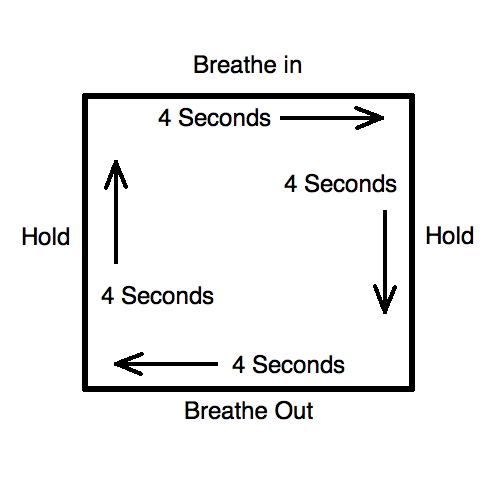These Anti-Anxiety Tools Will Help You Avoid Adrenal Overload in Times of Stress
- Janet Nahirniak

- Dec 1, 2020
- 4 min read
Updated: Oct 26
A Free Toolkit For Managing Anxiety

Between a global pandemic, political insecurity and a declining economy, anxiety is rampant these days and the
effects are manifesting in a variety of negative ways: increased neuroses, difficult (or poor) decision making, panic attacks, memory blocks, digestive problems, muscle tension, lack of ‘willpower’, and the list goes on.
Hypnosis can and absolutely does help lessen the duration, frequency and weight of anxiety. There is an inexpensive anxiety relieving download available on my website that really does help, but what happens if you hit a snag or encounter a trigger during the middle of your day?
Hypnosis may not be a practical option at the checkout counter of the supermarket.
The good news is that you don’t have to just ‘live with it’. There are some simple, FREE, and extremely effective tools you can use.
HOW TO BEST USE THE TOOLS
Luckily, before crippling anxiety or panic attacks completely take hold, a wind up, or warning cycle occurs. This is your opportunity to pull out the toolkit. At this point, you have anywhere from a few seconds to a few minutes (depending upon your individual pattern) to take action and avoid an actual meltdown.
Avoiding the attack will help you accomplish what you want in that moment, will help you feel more in control, and with repetition, will activate and reinforce a more helpful, constructive response.
WIN- WIN-WIN
Practical Tools for Managing Anxiety and Panic Attacks ...Besides Hypnosis ;)
These tools, when you actually use them, are very effective, but work best combined with the final reset breath described below.
YOUR TOOLKIT:
Tool #1) Naming the feeling
When you first begin feeling anxious, take a moment to identify the feeling. Is it fear? General anxiety? Insecurity? Define it, and then begin speaking it out loud.
“I am feeling anxious (or whatever). Anxiety. Anxious. Anxious. Anxiety. I am feeling_______.”
or
Tool # 2) 3-2-1
Take a moment to identify:
3- things you can see
2- things you can hear
1-thing you can physically feel (your clothing on your body, your shoes on your feet, etc.)
or
Tool #3) Square breathing
Square breathing is a technique where one draws a box/square on their leg (or other body part) while focusing their breath. Begin by drawing your first line upward while resting for a count of 3, then move your finger over and breathe in deeply for a second count of three, move your finger down while holding your breath for a third count of three, and finally, close the box while exhaling for a count of three.
Square breathing/controlling your breath is one of the best, fastest, and easiest ways to control emotion and one of the advantages of this technique is that it can be done, unobtrusively-- anytime and anywhere. No one ever need know what you’re doing!

AND finally
4) Reset Breath
This breath should always be done once as the final step, after the other tools, and acts as a final reset and release. By breathing in very deeply, holding until slightly uncomfortable (a count of 4), and then finally exhaling, you mimic your body’s pattern of breath during your deepest state of sleep and relaxation. A reset breath is an involuntary signal for your body to relax, release and let go.
How do these tools work?

Your brain is capable of processing information at an incredibly rapid pace, and can accomplish so many things
with the greatest of ease. That said, even your amazingly complex and dynamic mind cannot be in two places at once, and modern science attributes different areas of the brain to different functions. Naming the Feeling, 3-2-1, and Square Breathing techniques
all work by relocating your mind’s energy away from the limbic system, where you process emotions, to other parts of the brain. Away from the brain’s emotional centre, you are able to reset and avoid a full-fledged attack.
By naming the feeling and speaking it aloud, you are activating the part of your brain called the Broca’s Area. It is responsible for producing speech and is located on the left side of your head towards the front.
The 3-2-1 technique and Square Breathing both engage your physical senses, located in the parietal (temperature, taste, and a few others) and occipital (vision) lobes of your brain, again pulling brain energy away from the limbic system.
A Final Word:
You don't need to suffer. There is help... and it needn't be expensive!
The very BEST approach I've found involves a dual approach using the techniques described above, in conjunction with, hypnosis, like the anxiety relieving download mentioned above.
Janet Nahirniak, B.Ed, M.Sc., has been helping clients as a Master Hypnotist and certified clinical Hypnotherapist since 2006. Her focus on neuroscience and psychology during her Master's degree gives her keen insight into how things like trauma, mental health issues, & chronic pain can physically change the brain. She brings that scientific background, along with her natural compassion, to her hypnosis and hypnotherapy practice to ensure her clients get the safest, most informed, and most effective care possible.

Comments